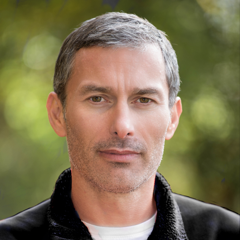The Use of UAVs in the Raw Material Sector, from Mineral Exploration to Post-Mining Monitoring
A special issue of Remote Sensing (ISSN 2072-4292). This special issue belongs to the section "Remote Sensing in Geology, Geomorphology and Hydrology".
Deadline for manuscript submissions: closed (30 November 2018) | Viewed by 77184
Special Issue Editors
Interests: hyperspectral imaging; mineral exploration; remote sensing
Special Issues, Collections and Topics in MDPI journals
Special Issue Information
Dear Colleagues,
The high demand for raw materials in our post-industrial societies contrasts the increasing difficulties to find new mineral deposits. Accessible and high-grade deposits are mostly exhausted or currently mined. Hence, future exploration must focus on the remaining, more remote locations and penetrate much deeper into the Earth’s crust or make use of the huge amount of left-overs (tailings).
The monitoring of mining of processing sites can also benefit from the use of UAVs. Mine surveying covers all aspects concerning the mining of rock mass and related safety issues (e.g., pit slope stability) and UAVs recently became a new option for geo- referenced, quantitative assessments of the mined tonnage. Recently, the near real time assessment of quality and quantity of ores has become a challenge for an efficient processing. UAVs might support a rapid survey of the mining operations and of the material flow to and out of the processing facilities.
The renaturation of mining areas is a permanent task, which requires high-resolution monitoring. Spectral sensors are useful for the detection of vegetation health and Acidic Mine Drainage (AMD) aspects. Unmanned Aerial Systems (UAS) equipped with spectral sensors suite in particular vegetation monitoring to assess the success in renaturation, for example, in the case of shallow surface mining covering a large area with a high turnover of top soils. The acquired data allows monitoring the response of vegetation to stress factors at a high temporal and spatial resolution and hence, is the basis for an improved management of renaturation. In addition, slope failures are of concern for sustainable renaturation programs and may be monitored using UAS structure-from-motion photogrammetry.
These aspects, coupled with the challenging market conditions, outline the need for more creative and integrative approaches for the exploration of new mineral deposits and the monitoring of (post-) mining activities. However, there is a gap between the scales of airborne and ground-based data in terms of spatial resolution. UAS can overcome the scale gap providing high- resolution multi-temporal data. They are easy to use, flexible and deliver data within cm-scale resolution. The UAVs currently mainly relies on structure-from-motion photogrammetry, aerial photography and agricultural monitoring. However, only few sensors are available for UAS (e.g., VNIR hyperspectral, but no SWIR). The field of drone-borne hyperspectral and geophysical applications is rather unexplored but provides great potential. So, an integration of aircraft based- and drone-borne data is mostly remains necessary for applications along the value chain of raw materials. The combination of multi scale applications might allow a more efficient exploration, surveillance of mining operations and geotechnical problems and the rehabilitation of mining landscapes.
For this Special Issue, we seek submissions about the design and the evaluation of new and adapted concepts for the use of UAV based multi-sensor observation and monitoring methods. Satellite remote sensing can provide baselines for the required high temporal and spatial resolutions. The methods include geophysical tools, LiDAR as well as hyperspectral sensors covering the visible to thermal-infrared part of the electromagnetic spectrum. The new combined sensor approach should address various purposes, such as, but not limited to:
- Exploration and mineral mapping to secure sustainability in mining
- Monitoring of mining operations to improve efficiency and safety
- Ongoing assessment of mining activities to mitigate environmental impact
- Survey of post mining landscape rehabilitation.
Dr. Richard Gloaguen
Dr. Moritz Kirsch
Guest Editors
Manuscript Submission Information
Manuscripts should be submitted online at www.mdpi.com by registering and logging in to this website. Once you are registered, click here to go to the submission form. Manuscripts can be submitted until the deadline. All submissions that pass pre-check are peer-reviewed. Accepted papers will be published continuously in the journal (as soon as accepted) and will be listed together on the special issue website. Research articles, review articles as well as short communications are invited. For planned papers, a title and short abstract (about 100 words) can be sent to the Editorial Office for announcement on this website.
Submitted manuscripts should not have been published previously, nor be under consideration for publication elsewhere (except conference proceedings papers). All manuscripts are thoroughly refereed through a single-blind peer-review process. A guide for authors and other relevant information for submission of manuscripts is available on the Instructions for Authors page. Remote Sensing is an international peer-reviewed open access semimonthly journal published by MDPI.
Please visit the Instructions for Authors page before submitting a manuscript. The Article Processing Charge (APC) for publication in this open access journal is 2700 CHF (Swiss Francs). Submitted papers should be well formatted and use good English. Authors may use MDPI's English editing service prior to publication or during author revisions.






